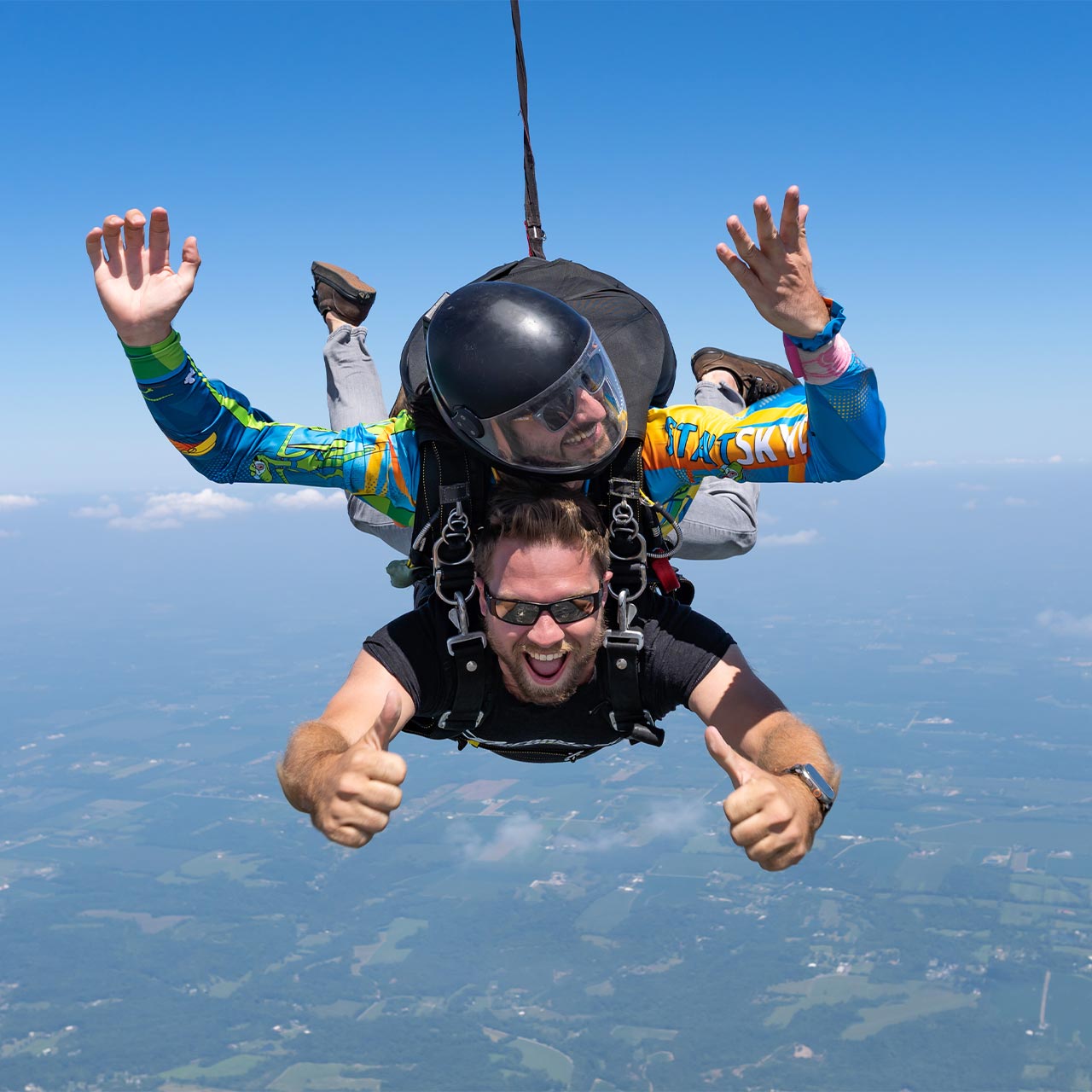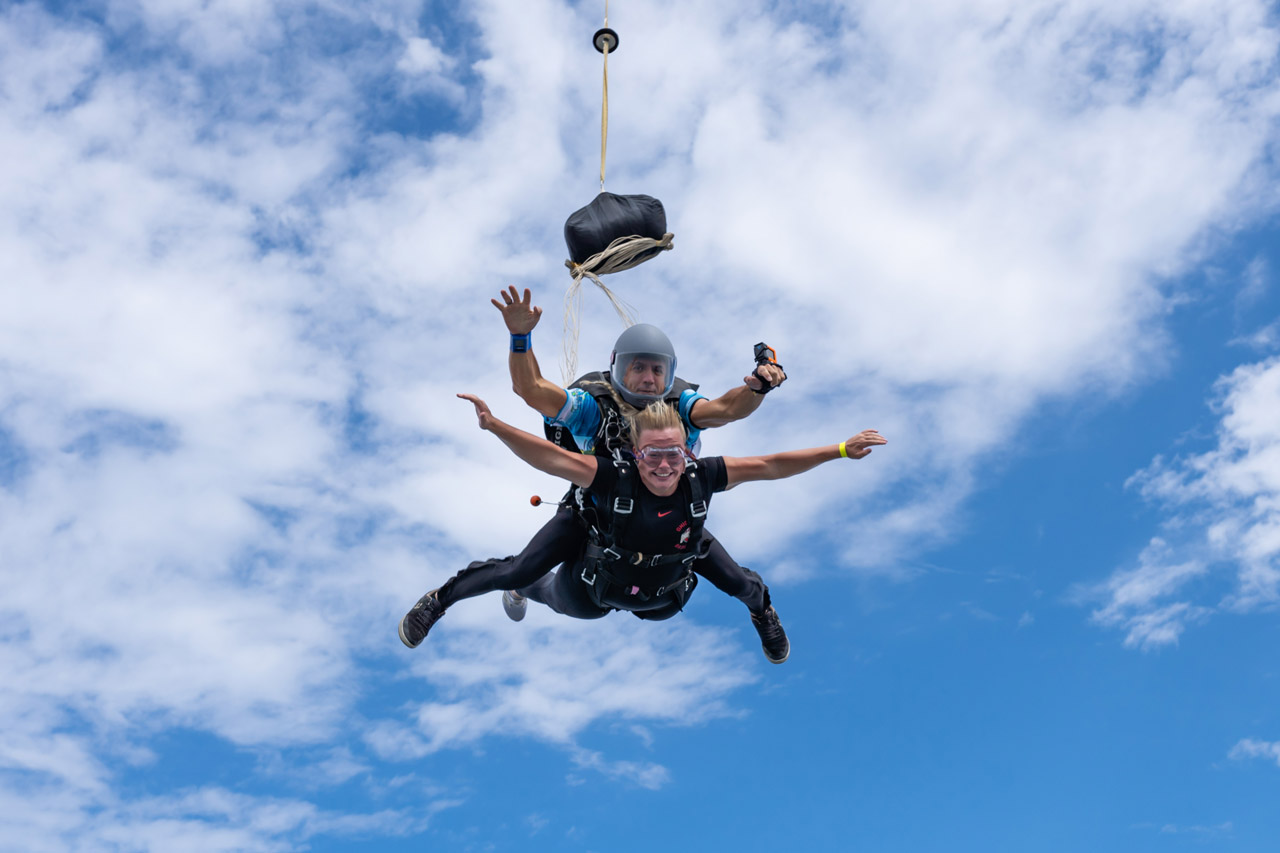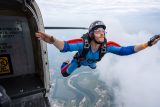Best Weather For Skydiving
Skydiving
Posted by: Start Skydiving
9 months ago

When it comes to skydiving, weather is either your best friend or your biggest enemy. While the thrill of freefall calls us to the skies, it’s critical to remember that in the end, Mother Nature calls the shots!
The best time of day to skydive is anytime with blue skies and gentle winds. Can you skydive in the rain? Nope. Not even a gentle rain? Nah, not so much. Having a solid understanding of the best weather for skydiving not only keeps safety a top priority, but it also ramps up the fun. Let’s look at the best weather conditions for skydiving, the weather that prohibits skydiving, and the why behind both.
What Conditions Are Good For Skydiving?
Although we rave about beautiful, blue skies making awesome skydiving photos, the weather is more than just a backdrop. Ideal weather conditions are not just about the comfort of a jump; they’re essential for prioritizing safety. What goes into making the skies conducive for the perfect skydive?
Clear skies.
Wide, open skies (and sometimes the random big, fluffy cloud) are a skydiver’s dream. Not only does a clear sky allow for crystal, clear views, but it enhances visibility for the pilot and skydivers – which is a Federal Aviation Administration (FAA) requirement. Cloudy conditions can obstruct visibility, making navigation back to the ground a bit tricky and potentially hazardous.
So, is cloudy weather good for skydiving? Only if the clouds are super separated! Thick, overcast layers are the bane of skydiver’s existence.
Calm winds.
Winds play a crucial role in skydiving. Light and moderate winds are ideal. Gusty, exceptionally turbulent, or unpredictable winds (in strength and direction) are all big no-nos when it comes to jumping. Calm wind conditions help to ensure a controlled descent under canopy. They also make spotting the exit point from the aircraft simpler due to less drift in freefall.
- Wait … you don’t actually freefall straight down? Nope. The freefall portion of a skydive doesn’t feel like falling at all – it’s more like flying. The wind blows in all sorts of directions up top, and we’re thankful for the technology that allows us to realize these before a jump. When you skydive, it’s common to not exit directly over where you intend to land, as we calculate the exit point based on the wind speed and direction, which gives us an approximate of how much we’ll drift.
Moderate temperatures.
Skydiving is best when temperatures are in the Goldilocks range: nothin’ too hot and nothin’ too cold. However, when properly accounted for, skydivers tend to prefer the heat over the cold. How come? It’s already cold enough up there! This is one reason the majority of jumpers choose summer as their favorite season for skydiving.

What Conditions Are Bad For Skydiving?
Clouds.
Can you skydive through a cloud? It’s actually illegal to skydive through a cloud! As we’ve covered, clouds are only OK if they’re far apart.
Strong winds.
What is too windy for skydiving? Different skydivers have different wind limits. Wind limits depend on whether the skydiver is a licensed solo jumper – which includes tandem instructors – or a student who is learning to skydive solo. Licensed jumpers are allowed to set their own, personal wind limits, and they vary based on the person.
- For example, someone with 100 skydives may feel comfortable jumping in 20mph winds if they’re consistent in strength and direction, while a person with 1,000 skydives may have a strict wind limit of 17mph. It’s a personal preference! The skydiving community is tight-knit, and we have each other’s backs – meaning, if we see someone with less experience about to do a full-send in windy conditions, we’ll ask them what’s up!
Extreme temperatures.
Skydiving in extremely cold or hot temperatures can be dangerous. Dehydration, heat exhaustion, general physical discomfort, and bumpy thermals from the hot weather are all potential dangers.
While many of these can be mitigated by properly hydrating, eating, resting, and dressing, thermal activity is sort of out of our control. Thermals are the rising columns of air that are caused by uneven heating of the earth. This is because different objects (trees, grass, runways, hangars, cars, etc.) heat differently. Thermals can cause our parachutes to fly a bit wonky – making them rise or sink when we don’t want them to.
Extreme cold can cause some issues, too. On average, the temperature decreases by 3.5 degrees Fahrenheit for every 1,000 feet gained. For example, if the temperature is 50 degrees Fahrenheit on the ground, jumping from 13,000 feet puts you at almost 0 degrees Fahrenheit up there!
Skydivers in really chilly conditions are at risk of limited dexterity or even hypothermia. This means that we would hypothetically stay grounded in dangerously chilly temps. But, we don’t see that kind of cold weather in sunny California.
Best Time Of The Year To Skydive
Is it better to skydive in the summer or winter? Either/or! While avid skydivers fantasize about summertime skydives, when the dropzone is busy and vibes are immaculate, there’s something special and more subdued about autumn and winter jumps, too. Honestly? It’s up to you!
Skydiving is a relatively customizable sport – from the way we fly our tandem parachutes to combat motion sickness to choosing which views suit your fancy. If you prefer fiery orange and red foliage, jump in the fall! Don’t mind the cold? Winter jumping is for you. Want to zoom in for landing across some gorgeously, dewy grass? Jump in the morning!
Advanced Weather Tips
Have a few jumps under your belt? Learning to get your solo skydiving license and need all the knowledge you can get? For those looking to dive deeper into weather-related nuances, check out our YouTube video on advanced weather tips for experienced jumpers.
What About Weather Cancellations?
Any day we get to skydive is a good day. And any day we don’t get to skydive only builds anticipation for the next jumpable day! Skydivers adamantly wait out unfavorable weather – feel free to hang out with us and wait it out with our fingers crossed. If things aren’t looking up, we will gladly reschedule your skydive.
Let’s Jump!



